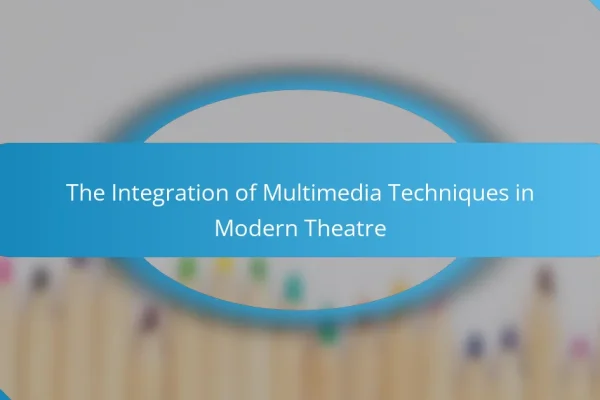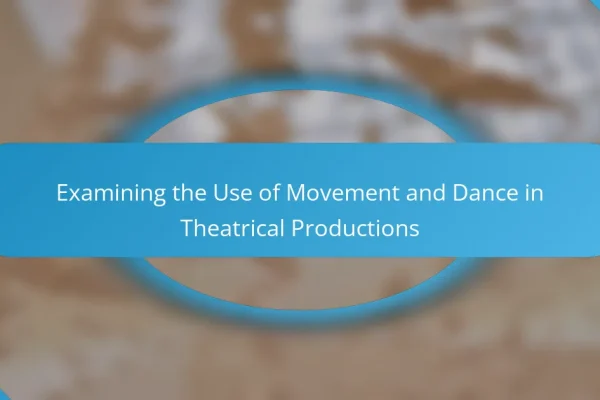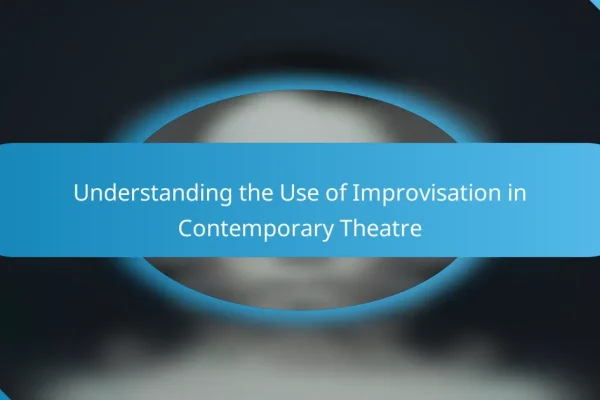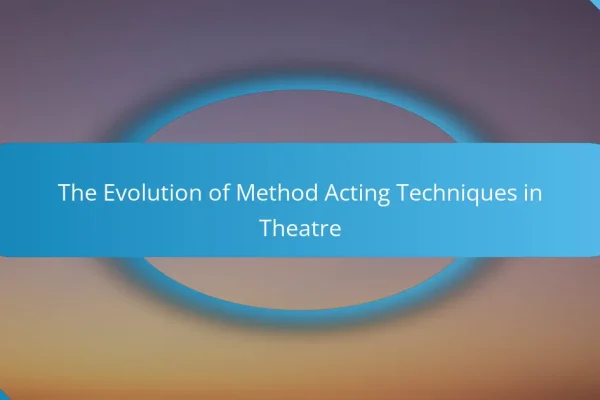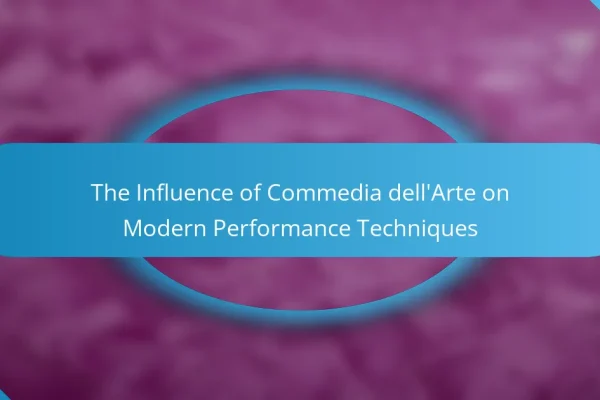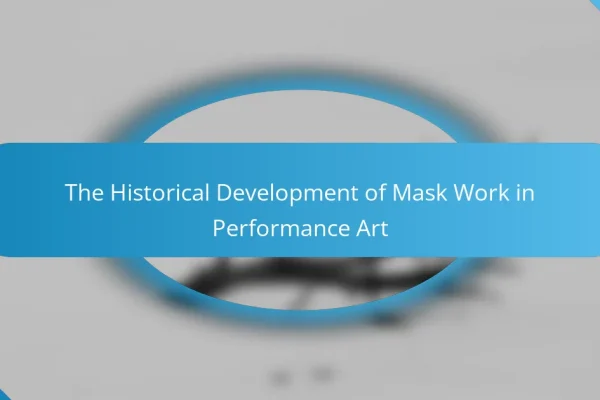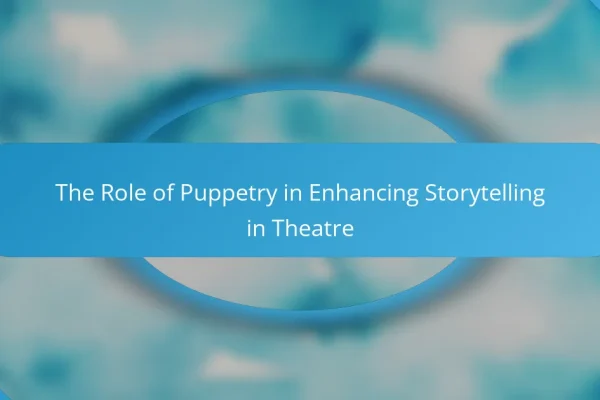
The Role of Puppetry in Enhancing Storytelling in Theatre
Puppetry is a significant technique in theatre that enhances storytelling by adding visual and emotional depth. Various forms of puppetry, including marionettes, hand puppets, and shadow puppets, allow for unique and creative expression, enabling the portrayal of complex characters and abstract concepts. The integration of puppetry with live actors fosters collaboration and enriches performances, engaging…

